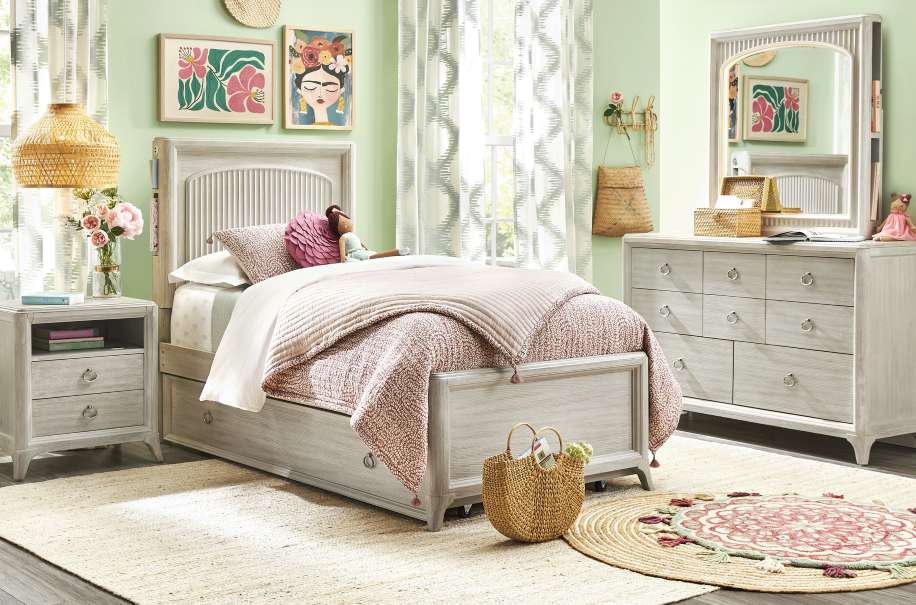
Playroom Design Ideas: Creating a Kid’s Playroom
Turn any room into a magical play space where kids can explore, learn, and play.
Creating a vibrant and functional playroom for your children can be a delightful yet daunting task. With the right design choices, you can transform any room in your house into a magical space where your kids can spend their days exploring, learning, and playing. There are a lot of kids playroom design ideas and playroom furniture solutions to help you get started on this exciting journey – just take a look!

Choosing a Playroom Location
The first step in creating the perfect playroom is deciding where it should go. This space should be safe, accessible, and adaptable to your child's growing needs.
Choosing a Playroom Theme
Selecting a theme for your playroom can set the tone for the entire space. Whether you're envisioning a vibrant, colorful playground or a serene, animal-themed retreat, there are plenty of themed playrooms ideas to inspire you. Consider playful themes like a jungle adventure, space exploration, or a fairy-tale castle. For your sci-fi kids or animated devotees there is furniture with Disney themes, including Star Wars and Disney's Frozen. Each theme can be brought to life with themed decor, wall art, and thematic furniture pieces, creating a cohesive and immersive environment.
Choosing Playroom Decor
Once you've selected a theme, it's time to decorate! Playroom decor should be functional yet fun, creating an engaging environment for your child. Explore Rooms To Go for kids playroom decor ideas, including colorful rugs, whimsical accent pillows, and multi-functional bookcases and storage units that keep clutter at bay while adding character to the room.
Creating a Teen Hangout Spot
As children grow, their needs change. Transitioning from a kid's playroom to a teen hangout spot is a great way to adapt to these changes. Consider converting a basement or guest room into a cool game room or a relaxed space where teens can socialize, study, and relax. Some stylish and comfortable furniture perfect for a teen's retreat includes lounge chairs, bean bags, and entertainment units.
Designing a playroom or teen hangout spot requires thoughtful consideration of location, theme, and decor. With Rooms To Go, you can find everything you need to create a space that grows with your child, encourages play, and fosters creativity. Whether you're outfitting a small corner or an entire room, your perfect playroom awaits.



























